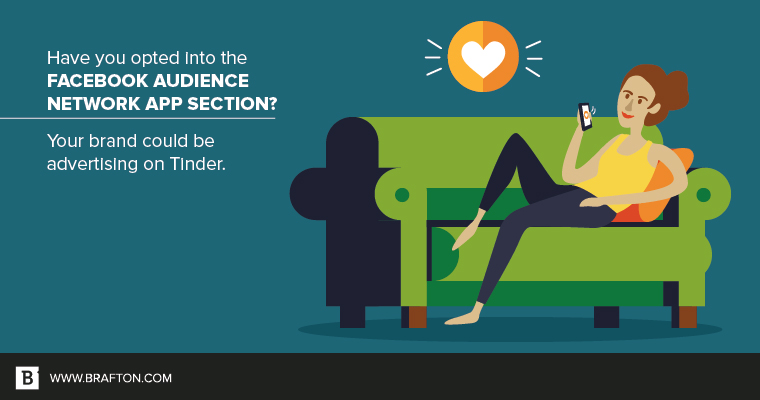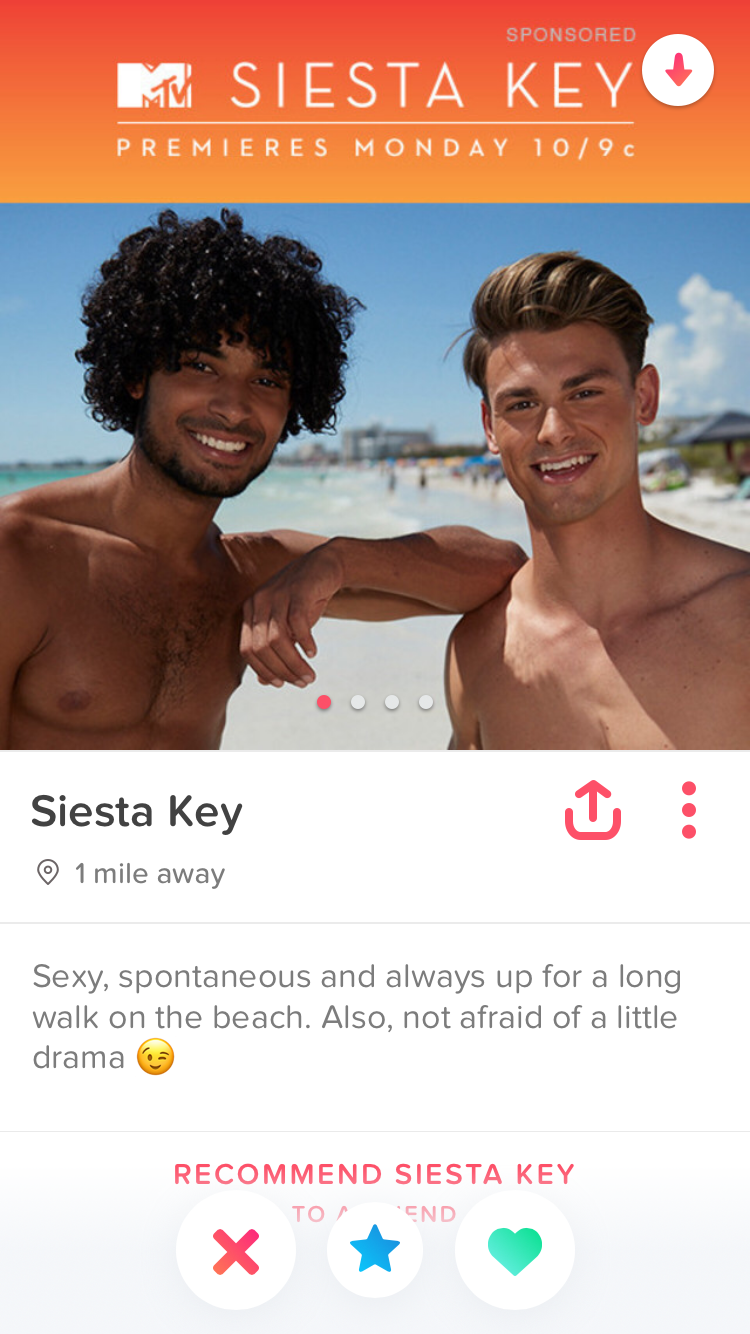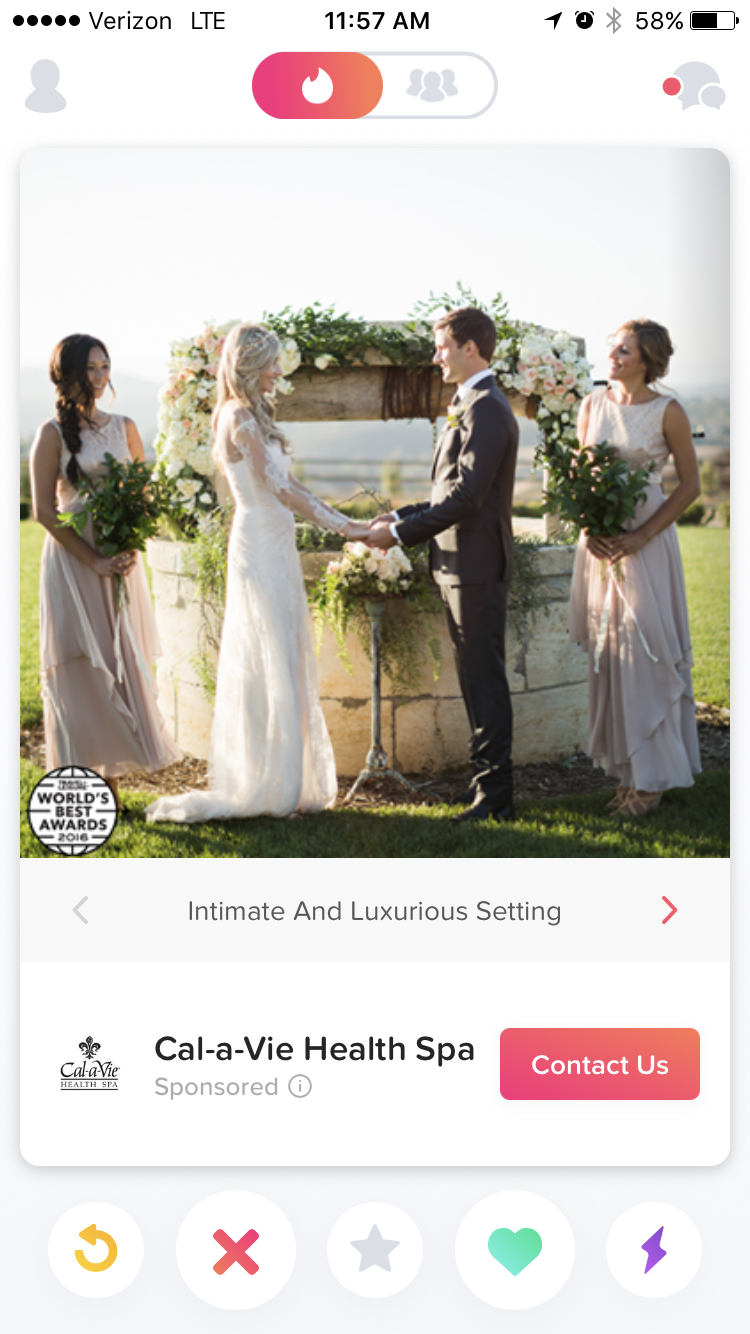It’s a typical post-workout Wednesday evening and you’ve settled into watching mindless television. You pull out your phone and think, “What’s my weekend plan? Perhaps I should try to find a date.”
You open up Tinder and start swiping, as many single 20- and 30-somethings do.
About 10 profiles in, the app starts serving advertisements to you. All of a sudden, you see your company’s logo, images and ad copy staring at you.
“Wait, why are we advertising on Tinder?! Who made this decision? Does this make sense for our brand?”
This happened to me with three clients over a week-long period, and I was perplexed. Why are my B2B clients with non-20-something audiences putting their brands on this app?

Do you know if you’re advertising on Tinder?
And so my investigation began.
First stop? As many digital marketers would, I logged into Google Analytics and proceeded to look into Acquisition.
It’s an app, so it’d be in referral, right? Nope.
How about social? No dice.
Time to Google some long tail keywords to learn more about this Advertising Channel.
It suddenly dawns on me: I’m going to have admit to my client I’m actively swiping on an app known for hookups, but I had no data to show to pose the question: “Is this working? What was the reasoning?”
Some ad campaigns do work on Tinder
I have seen smart B2C campaigns on Tinder.
“The Mindy Project” launched a fun campaign where you could swipe right or left on the characters and they would send you a message (why yes, I’d love to go on a date with Chris Messina’s character).
MTV recently promoted its new show “Siesta Key” on Tinder – these are campaigns with appropriate target audiences, and wouldn’t diminish a brand’s reputation in my opinion.


When did Tinder join the smaller advertising campaign world?
In February 2017, Tinder commenced a relationship with Facebook Audience Network. They are looking to capitalize on the 4 million advertisers who advertise on Facebook and the surge in programmatic advertising that is 73 percent of all display ads.
Have you opted into the Facebook Audience Network app section? Your brand could be advertising on Tinder.
That’s right.
You probably don’t even know your Facebook spend is going to Tinder if you’ve opted into Third Party ads.
The worst part? You don’t get to track who is being served the ads. Tinder is notoriously secretive about its audience – digital marketers like data to track how campaigns are progressing. If you can’t track it, don’t launch it (that’s a saying, right?).
How to opt out of Tinder ads
If you’ve opted into apps through Facebook Audience Network, don’t panic (okay, you can panic a little and be slightly embarrassed that you may be showing up on Tinder. Can’t be as bad emailing your Director of Digital Marketing Strategy to talk about your dating app activity, right?).
You can opt out.
You don’t need to have your ads served up to 20-somethings looking to ease their lonely nights.
Regardless of whether you handle your social strategy in house or through an agency, spend time walking through the Facebook Audience Network and what third-party apps your organization has opted into.
If you find the idea of your Paid Media spend being used in apps where it’s hard to track engagement and the audience intention may make you a little queasy, remove all of them or just the apps that you feel aren’t appropriate for your brand. You can opt out of Dating Apps – and you probably should.
As social networks and apps align themselves to conquer the digital ad world, keep in mind that your brand could be being placed next to unsavory content. Diligently review and audit where your ad spend is going and don’t be afraid to say, “This is not the match for me.”





